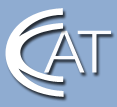Explore high-paying careers in clean, high-tech Connecticut manufacturing.

Educators: Externships
Externship Summary - 2006
RCNGM Leader: Catherine Seaver, Engineering Professor
Manchester Community College
Externship: Connecticut Photonics Research Center
Lessons Learned:
The most useful component of my externship was the exposure I had to the field of photonics, photonics research, and the role that engineering plays in scientific research. I spent a lot of my time doing research on the Internet for Dr. Roychoudhuri so we could complete a paper in August for presentation at a photonics conference. A copy of this paper can be found at http://www.phys.uconn.edu/~chandra/06-Enrgy.Drk.Frng.SPIE-V.6285.pdf . While doing this research, I was able to learn about photonics and physics research. The entire world of research, scientific paper writing and physical experiments at the quantum level is new to me. I have taken what I learned from this experience into the classroom this year and shared it with my students in several different classes including Engineering Experience and C++ for Engineers. Also, as the chairperson of the Engineering and Technology department at MCC I spend a lot of time advising students and the work I did this summer has given me more to share with students about opportunities they have in science, engineering and research.
The most challenging part of my externship was staying on task while doing research. I often found interesting articles and reports that weren’t directly related to my research but they were so interesting that I often wanted to spend time reading them even though they weren’t required for the paper we were working on. Also, this area of physics (photonics and quantum mechanics) is new to me so I did a lot of reading outside of class in order to get a stronger background in the area.
Impact on Student Learning
It was interesting to see the student’s response to the projects we did. I think that many of them weren’t clear on the difference between engineering and science at the beginning of the semester but the projects they did helped them see how engineers and scientists can work together even though they have different backgrounds and goals.
To be honest, I didn’t even think of asking Dr. Roychoudhuri to be involved in this curriculum project. In hindsight, it would have been nice to invite him to see the student’s presentations on science and engineering. I am sure that Dr. Roychoudhuri would have been willing to be involved if I had asked him. Perhaps I will do this next semester.
The students in my Engineering Experience class prefer hands-on projects and research opportunities over “book learning�. Through this curriculum project they were able to combine learning more about how engineering and science are used together while being able to select a project in an area they are interested in. Not only did they enjoy working on their own projects, but they were also interested in seeing what their classmates presented. We had a short discussion at the end of each presentation in which everyone participated. I think the students in this class are very motivated, primarily because they are active and involved in the class, not just sitting and listening to lectures.
Externship Sustainability
In our department meeting I shared the results of the student’s projects that explored science and engineering. Also, I discussed them with the physics professor at MCC. I am working with a new engineering and technology teacher at the Great Path Academy at MCC and will be sharing this project with him as part of suggestions for engineering curriculum.
We continue to be interested in summer externships through the Regional Center for Next Generation Manufacturing and several of us in the Engineering and Technology department at MCC are considering applying for externships to work with the DOL grant this summer. If I do not apply to work on the DOL grant, I will be returning to UConn to continue to work with Dr. Roychoudhuri, building on what I learned through the externship last summer.





